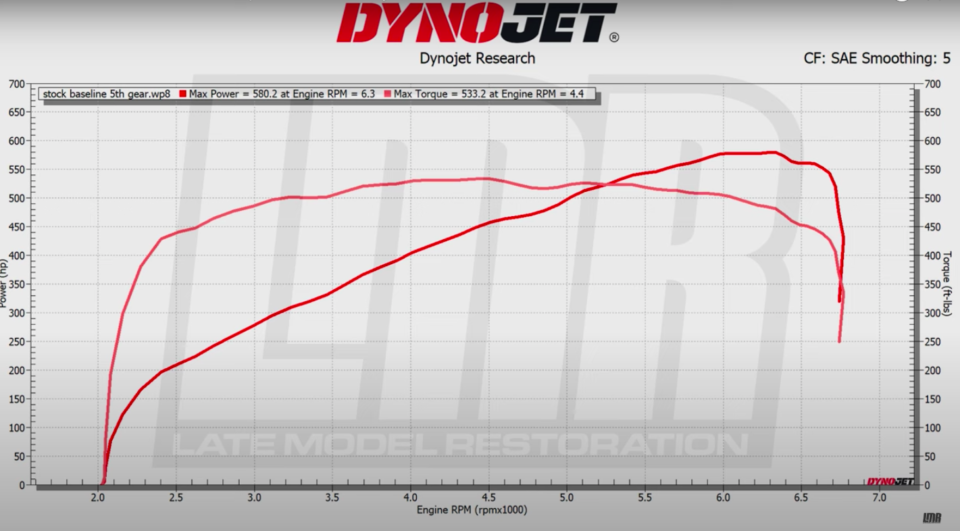While the Predator engine is heading toward the finish line in the Shelby GT500, its legacy lives on in the 5.2-liter Carnivore engine that powers the 2023 F-150 Raptor R. As with any new performance vehicle, enthusiasts are curious how the factory output ratings translate to the rear wheels.
Thankfully, the crew at LMR picked up a fresh Raptor R, and put it straight on the company’s in-house chassis dyno to find out just want the latest supercharged 5.2-liter engine was capable of delivering through the truck’s robust drivetrain.

Fitted with a 2.65-liter EATON TVS supercharger pumping out 12 pounds of boost, the Carnivore 5.2-liter engine powering the 2023 F-150 Raptor R is rated at 700 horsepower and 640 lb-ft of torque at the flywheel. To find out how that translates to the rear wheels, LMR strapped its new performance pickup to the company’s in-house chassis dyno.
As a refresher, Ford engineers took the Predator engine, swapped the pulley, changed the calibration, upgraded the crank damper, and made a few other changes in deference to fitting the engine in an F-150 pickup, like a unique oil pan. The result is a factory output rating of 700 horsepower and 640 lb-ft of torque, which is 60 ponies lower and 15 lb-ft higher than the Shelby Predator’s rating.

In stock form, the 2023 F-150 Raptor R delivered rear-wheel outputs of 580 horsepower at 6,300 rpm and 533 lb-ft of torque which is about 88 horsepower and 27 lb-ft of torque lower than the 2020 Shelby GT500 that LMR tested a few years ago. (Image Credit: LMR)
Strapped to the LMR dyno with a tankful of 93-octane and the transmission locked in fifth gear, the showroom-stock Raptor R dug its claws into the chassis dyno to the tune of 580 horsepower at 6,300 rpm and 533 lb-ft of torque at 4,100 rpm at the wheels, which LMR video host Landon Durham described as “pretty damn impressive considering that monstrous drivetrain.”
As you can see in the video above, LMR played with a high-flow filter and ice on the intake to pick up a bit more power, but what’s interesting is how it compares with the testing LMR did on its 2020 Shelby GT500 a few years back. That high-revving car delivered rear-wheel results of 668 horsepower at 7,160 rpm and 560 lb-ft of torque at 4,000 rpm, which emphasizes that the truck’s bulky drivetrain is understandably less efficient.

















